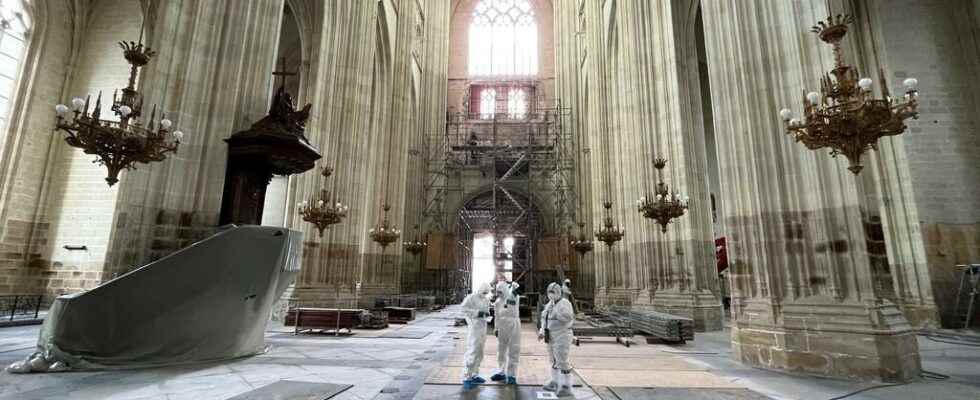Two years after the fire that partly destroyed Nantes Cathedral, every square centimeter of the building is covered with lead. The project costing more than two and a half million euros is titanic, but also meticulous in removing all the residues of this dangerous substance.
With our correspondent in Nantes, Matthew Bonhoure
You have to put on two suits, a special mask, gloves, then go through five decontamination airlocks before you can enter the nave of the Saint-Pierre-Saint-Paul cathedral in Nantes, hit by fire July 18, 2020.
” People who come to work can only intervene on a shift basis. They work for two and a half hours, they have to come out of the cathedral for half an hour because it would be too dangerous for the employees. “Explains Anne-Marie Chépeau Malhaire, engineer in charge of decontamination and restoration work.
► Read also : Fire in the cathedral of Nantes: the confessions of a Rwandan volunteer
The 20 workers are wearing assisted breathing masks and coveralls. They clean every square inch with special big vacuum cleaners. Some areas had 90,000 micrograms of lead per square meter, while the standard is only 1,000. ” We’ve already brought down a lot, but we’re going to have to bring down more “, notes Anne-Marie Chépeau Malhaire.
” What was most complicated for us to achieve is that it is very big. The vaults are 37 meters. It’s impressive “, indicates Alexandre Godet who supervises decontamination at height. Hidden under protective tarpaulins to prevent lead dust from being redeposited on them, around twenty damaged paintings were treated on site. ” The best for the works is to leave them in the space in which they usually are. Some chapels are mobilized as reserves “, explains Clémentine Mathurin, heritage curator.
The cleanup will be completed in September. It will then be necessary to restore the building. Objective: a partial reopening of the cathedral in 2025.
The workers are equipped with assisted breathing masks. With lead pollution, they work two and a half hours, then they have to go out for half an hour before being able to do a second shift. @RFI pic.twitter.com/3p6F5gh3rE
— Matthew Bonhoure (@mbonhoure) June 27, 2022
